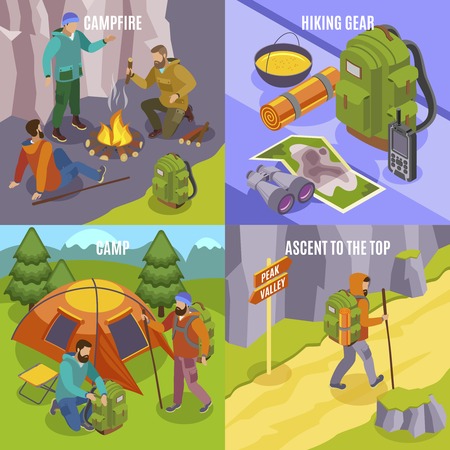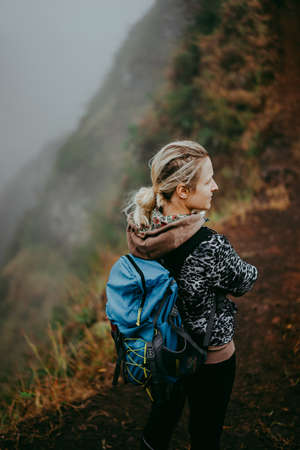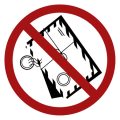1. Plan Ahead and Know Your Campsite
If youre new to camping, one of the most important things you can do is plan ahead and get familiar with your destination before you hit the road. A little research goes a long way in making sure your outdoor adventure is safe and enjoyable.
Do Your Homework Before You Go
Start by researching the campsite online. Look for reviews, photos, maps, and any official park websites. This will help you understand what to expect and what to bring. Not all campsites offer the same amenities—some may have restrooms and running water, while others might be completely primitive.
Check the Weather Forecast
Always check the weather before your trip. Conditions can change quickly, especially in mountainous or forested areas. Knowing whether to expect sunshine or rain helps you pack the right gear and stay safe from unexpected storms.
Learn About Local Wildlife
Different regions in the U.S. are home to different animals—from bears in national parks to snakes in desert areas. Understanding what creatures live nearby will help you store food properly and avoid dangerous encounters.
Know the Rules and Amenities
Campsites often have specific rules about campfires, quiet hours, pet policies, and more. Make sure youre aware of these before you arrive so you can follow them and respect other campers.
Quick Checklist: What to Research Before You Camp
| Item | Why It Matters |
|---|---|
| Campsite Details | Know if there are toilets, water sources, fire pits, etc. |
| Weather Forecast | Packing appropriately keeps you dry and safe |
| Wildlife Info | Helps prevent dangerous encounters with animals |
| Park or Site Rules | Avoid fines and help protect natural spaces |
Planning ahead sets the tone for a smooth camping experience. With just a bit of prep work, youll feel more confident stepping into nature—ready for fun, not surprises.
2. Pack Smart with Essential Safety Gear
When youre heading out into the great outdoors, packing smart isnt just about comfort — its about safety. As a beginner camper, making sure you have the right gear can make all the difference in an emergency or unexpected situation.
Must-Have Safety Essentials
Before you zip up your backpack and hit the trail, double-check that youve included these important items:
| Item | Why Its Important |
|---|---|
| First Aid Kit (well-stocked) | Helps treat cuts, scrapes, insect bites, and minor injuries quickly. |
| Flashlight or Headlamp (with extra batteries) | Essential for seeing at night and signaling for help if needed. |
| Weather-Appropriate Clothing | Keeps you warm, dry, and protected based on current and forecasted conditions. |
| Emergency Whistle | A loud whistle can help rescuers locate you if you get lost. |
| Multi-tool or Pocket Knife | Useful for cutting rope, opening food packages, or handling small repairs. |
| Map and Compass or GPS Device | Helps you navigate and avoid getting lost — especially in areas with no cell service. |
Pro Tip:
Keep your emergency gear in an easily accessible part of your pack. In a pinch, youll want to grab what you need without digging through everything else.
Don’t Forget!
If youre camping in bear country or other wildlife-heavy areas, consider bringing bear spray or storing food in a bear-proof container. Always check local park guidelines before heading out.
Packing smart isn’t just about being prepared — it’s about giving yourself peace of mind so you can enjoy your adventure safely.

3. Campfire Safety and Fire Regulations
Campfires are one of the best parts of camping — they keep you warm, light up the night, and are perfect for roasting marshmallows. But they can also be dangerous if not handled properly. To stay safe and protect the environment, always follow fire safety rules and local regulations.
Only Build Fires in Designated Areas
Most campgrounds have specific fire rings or pits where youre allowed to build a fire. These areas are designed to contain flames and reduce the risk of wildfires. Never start a fire outside of these designated spots, especially during dry seasons when burn bans may be in effect.
Keep Water or Sand Nearby
Always have a bucket of water or sand within reach before lighting your fire. If things get out of control, youll need to act fast. A shovel is also handy for smothering flames or spreading out hot coals.
Extinguish Your Fire Completely
Before going to bed or leaving your campsite, make sure your fire is completely out. Pour water over the embers, stir them with a stick or shovel, and repeat until everything is cool to the touch. Never leave a fire unattended — even glowing embers can reignite.
Basic Campfire Do’s and Don’ts
| Do | Dont |
|---|---|
| Use existing fire rings or pits | Build fires near tents or trees |
| Keep water/sand nearby | Leave fires unattended |
| Extinguish fires completely | Burn trash or plastics |
Check Local Fire Regulations
Before heading out, check with the park ranger station or campground office about current fire restrictions. Some areas may not allow open flames due to high fire risk. When in doubt, use a portable stove instead of building a traditional campfire.
Practicing smart campfire safety not only keeps you safe but also helps preserve the beauty of our natural spaces for future campers.
4. Respect Wildlife and Store Food Properly
When youre out camping in the great outdoors, its important to remember that youre a guest in natures home. Wildlife may look cute or harmless, but wild animals can be unpredictable and dangerous if they feel threatened or are looking for food. One of the most important safety rules is to never approach or feed wild animals—even if they seem friendly. Feeding wildlife can make them reliant on humans and increase the chance of aggressive behavior.
Another key to staying safe is how you store your food. Improper food storage is one of the biggest reasons animals wander into campsites. Bears, raccoons, squirrels, and even skunks have an amazing sense of smell and can be attracted from miles away by the scent of your snacks.
Food Storage Tips for a Safe Campsite
| Do | Dont |
|---|---|
| Use bear-proof containers or lockers provided at campgrounds | Leave food in your tent or sleeping area |
| Hang food at least 10 feet off the ground and 4 feet from tree trunks (if no bear box) | Store food in your vehicle if camping in bear country (unless it’s allowed and safe) |
| Seal all food in airtight containers or odor-proof bags | Leave trash or leftovers out overnight |
Wildlife Etiquette While Camping
- Keep a safe distance—use binoculars or zoom lenses for viewing animals.
- Never try to pet or capture wild animals.
- Clean up all food scraps and dispose of trash properly.
- Teach kids not to chase or get too close to wildlife.
By respecting wildlife and following proper food storage techniques, youll not only protect yourself and your fellow campers, but also help preserve the natural behavior of animals living in these beautiful outdoor spaces.
5. Practice Good Hygiene and Leave No Trace
Keeping yourself clean and respecting the environment go hand in hand when youre out camping. Not only does good hygiene help you stay healthy, but following Leave No Trace principles ensures that nature stays beautiful for everyone to enjoy. Heres how to do both while enjoying your outdoor adventure:
Use Biodegradable Soap
When washing dishes or cleaning up, always use biodegradable soap. Regular soaps can harm wildlife and pollute water sources. Make sure to wash at least 200 feet away from lakes, rivers, or streams to protect natural ecosystems.
Pack Out All Trash
Whatever you bring in, make sure you take it back out. That includes food wrappers, cans, leftover food, hygiene products, and any other waste. Leaving trash behind not only harms the environment but can also attract wild animals to your campsite.
What You Should Pack Out
| Item | Why Its Important |
|---|---|
| Food scraps | Avoid attracting wildlife and reduce odors |
| Used toilet paper | Prevents contamination and keeps areas clean |
| Cans and wrappers | Avoid littering and protect animal habitats |
| Socks or clothing with holes | No trash should be left behind—even worn-out gear |
Follow Restroom Guidelines
If your campsite has designated restrooms, use them. If youre in a more primitive area, dig a “cathole” about 6-8 inches deep and at least 200 feet from water sources, trails, and campsites. Always cover it up when youre done. Pack out used toilet paper in a sealable plastic bag.
Stick to Designated Trails and Campsites
Walking off-trail might seem like a shortcut, but it can damage fragile plants and cause erosion. Stick to marked trails and only camp in designated areas to minimize your impact on the environment and avoid getting lost.
Your Quick Hygiene & Leave No Trace Checklist:
- ✅ Use biodegradable soap 200 feet from water sources
- ✅ Pack out all trash—including used toilet paper
- ✅ Follow proper restroom practices if no facilities are available
- ✅ Stay on marked trails and set up camp only in approved spots
- ✅ Keep hands clean to prevent illness—especially before meals
Taking care of yourself and the land is part of being a responsible camper. These small actions make a big difference for the next group of campers—and for nature itself.


